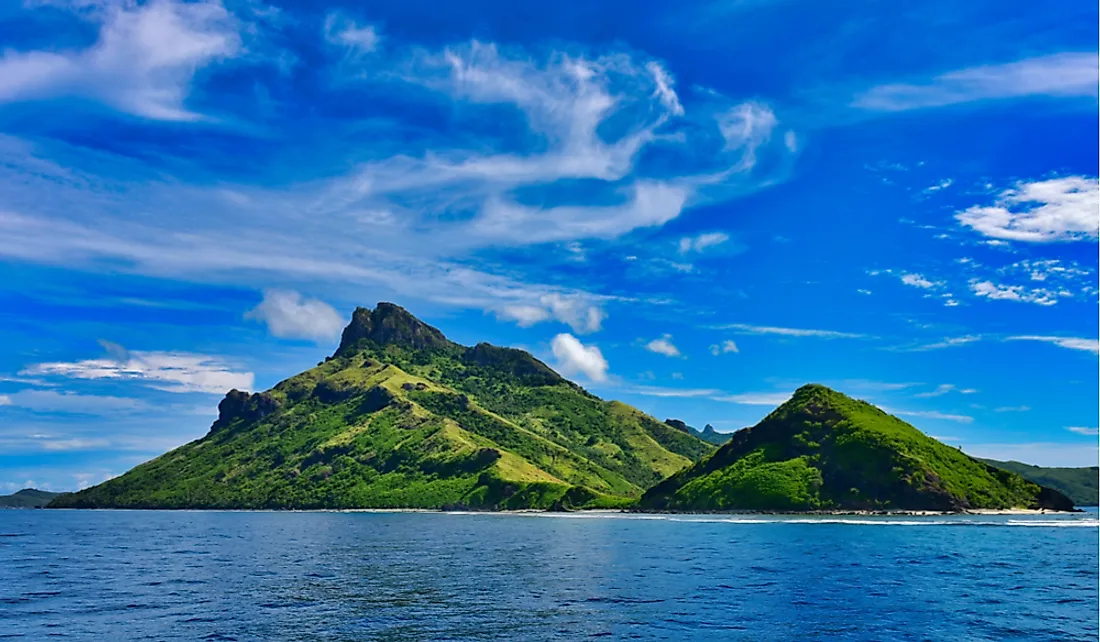How Many Islands In Fiji Are Uninhabited?

Fiji is an island country in the South Pacific Ocean. More specifically, Fiji is located in Melanesia, one of the regions of Oceania, and is roughly midway between Tonga and Vanuatu. Additionally, the country is about 1,000 nautical miles northeast of New Zealand’s North Island. Fiji is an archipelago that covers a total area of approximately 194,000 square kilometers, although only 10% of this total is land. The Fijian archipelago includes 332 islands, 106 of which are inhabited. The archipelago also includes 552 smaller islets. All of the islands and islets that make up Fiji are volcanic in origin. The country experiences a tropical marine climate, with warm weather all year round and little temperature variation.
Population of Fiji
Fiji had an estimated population of 884,887 in 2017, and a population density of approximately 46.4 individuals per square kilometer. Most of Fiji's population is concentrated in its two major islands, Viti Levu and Vanua Levu. Together, these two islands are home to 87% of the country’s total population. Viti Levu has a greater population than Vanua Levu, and leads the country in terms of tourism. The capital of Fiji, Suva, is located in Viti Levu and serves as the country’s chief cruise port. Viti Levu also has a profitable sugar-cane industry in Lautoka. Labasa and Savusavu are the largest towns in Vanua Levu.
Uninhabited Islands of Fiji
The islands of Fiji can be divided into 9 separate geographic island groups: Viti Levu Group, Kadavu Group, Lau Islands, Mamanuca Islands, Rotuma Group, Vanua Levu Group, Yasawa Islands, Lomaiviti Islands, and Conway Reef.
Most of the islands in the Kadavu Group are populated, with the exception of the Great Astrolabe Reef and Vanuakula Island. 19 islands in the Lau Islands group and 5 islands in the Lomaiviti Islands group are uninhabited. Most of the islands in the Mamanuca Islands are not inhabited by humans. With the exception of Rotuma, which has a population of 2,150, all other islands in the Rotuma Group remain uninhabited. Four islands in the Vanua Levu Group do not have any settlements: Buca Bay Islands, Dogodogo Island, Korolevu Island, and Yadua Tabu. Nukuivovo Island and Nukulau are the only two uninhabited islands in the Viti Levu Group, and three islands in the Yasawa Islands group are uninhabited. In addition to these islands, many smaller Fijian islets, reefs, and atolls are also uninhabited by humans.
Flora and Fauna of the Uninhabited Fijian Islands
Although the uninhabited Fijian islands are not home to humans, their undisturbed environments provide safe refuge to numerous species of flora and fauna, including several endemic species. The flora of these islands include mangroves, bamboo, palms, and hardwood trees, while fauna includes bats, iguanas, and geckos. Additionally, 162 species of birds can also be found in Fiji.
Tourism in the Uninhabited Islands
Given their pristine natural beauty, some of Fiji’s uninhabited islands attract adventurous tourists. Although permanent habitation on such islands does not exist, temporary tourist visits are common. For example, birding, wildlife-watching, jungle treks, swimming, sunbathing, scuba diving, and snorkeling are popular activities on these islands and their offshore waters. Some uninhabited Fijian islands also have protected territories that are safeguarded from human interference in order to conserve indigenous plant and animal species.











